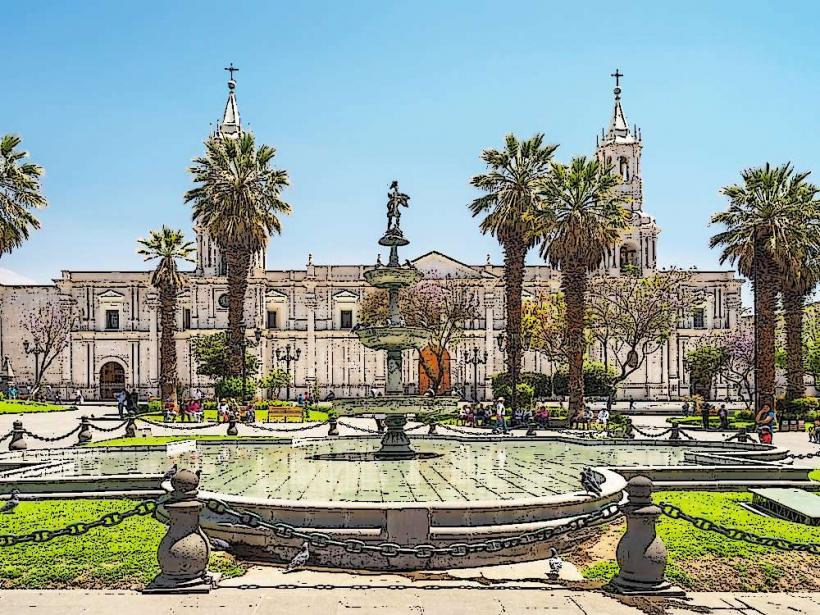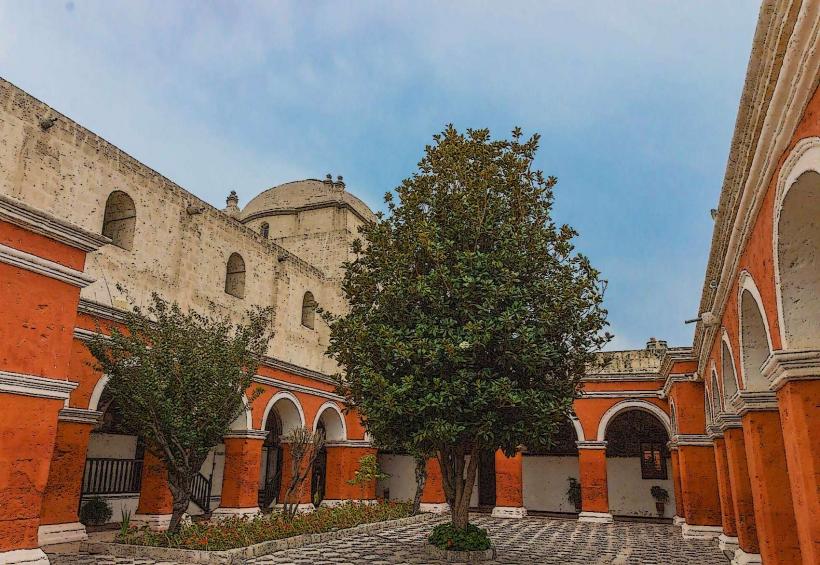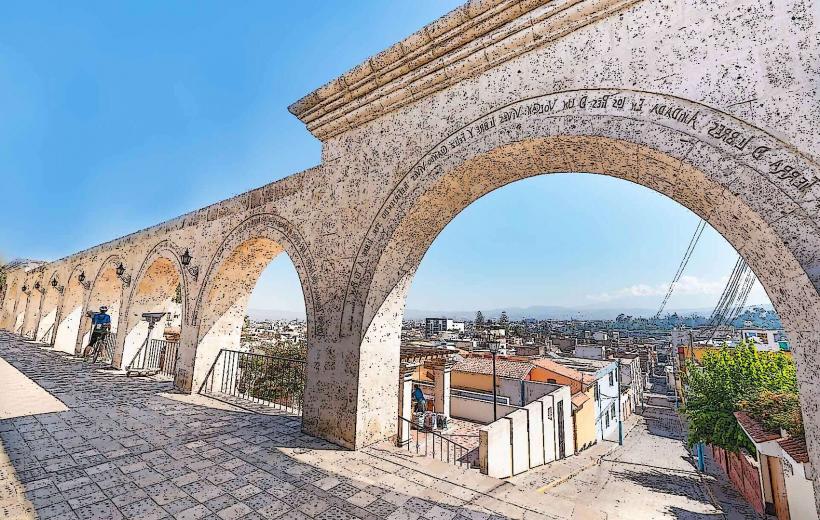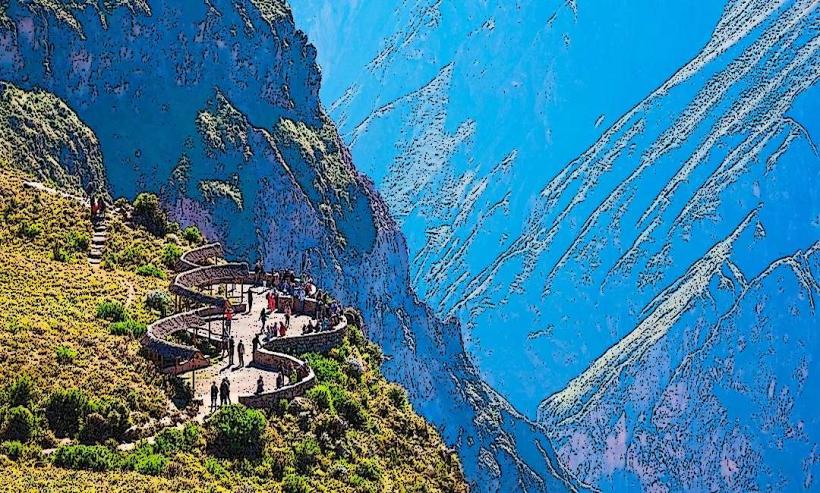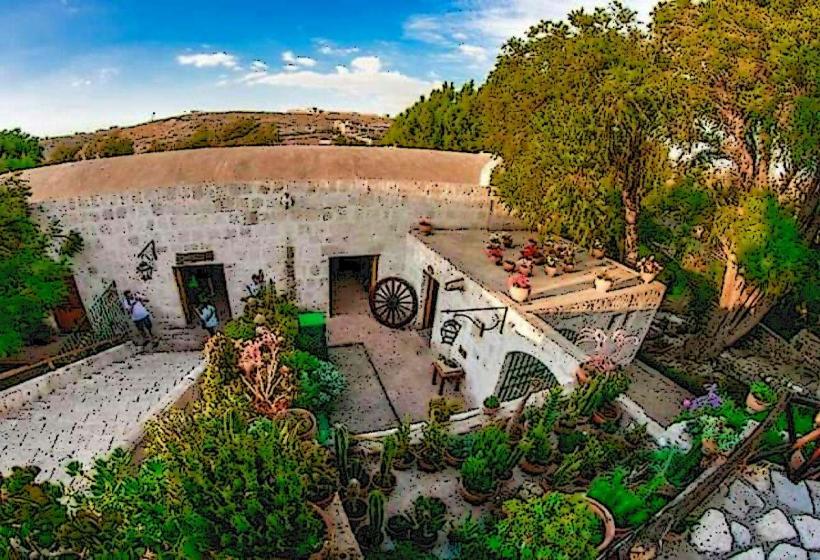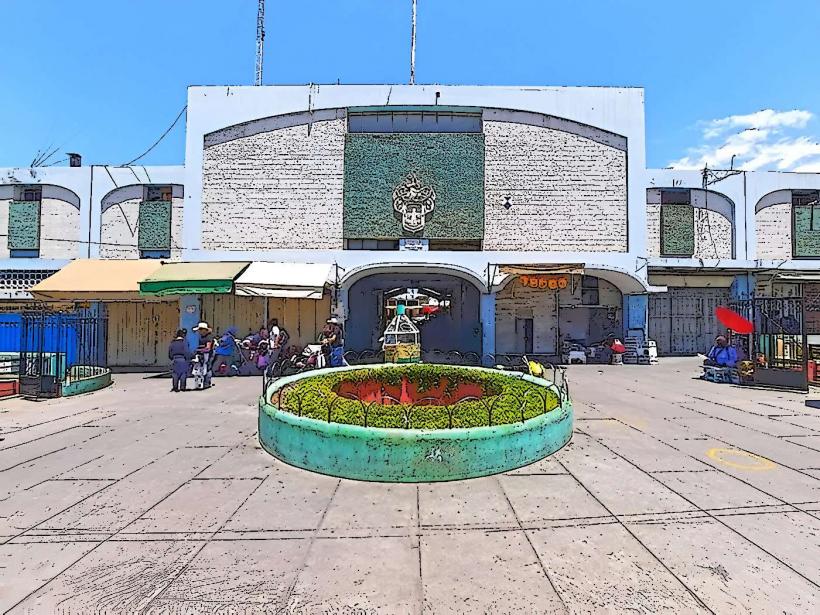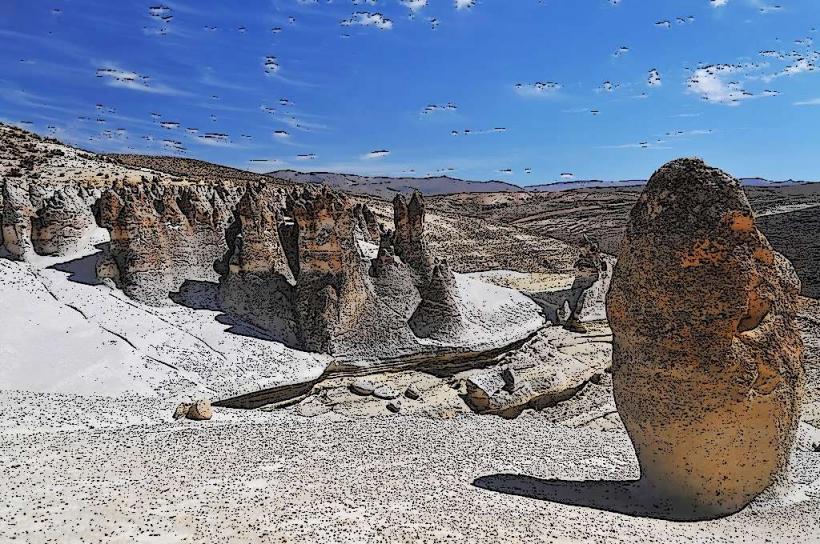Information
Landmark: Arequipa CathedralCity: Arequipa
Country: Peru
Continent: South America
The Arequipa Cathedral (Catedral Basílica de Arequipa) is one of the most important religious, architectural, and historical landmarks in Peru. Located in the heart of Arequipa, the "White City," this grand structure dominates the northern side of the Plaza de Armas and symbolizes the city's rich colonial history and devotion to Catholicism.
Overview
- Full Name: Basilica Cathedral of Arequipa
- Location: Plaza de Armas, Arequipa, Peru
- Founding Year: 1540 (original church); rebuilt and expanded several times after natural disasters
- Style: Neo-Renaissance with Gothic elements
- Material: Constructed from sillar, the white volcanic stone unique to Arequipa.
Historical Background
Early Beginnings:
- The original cathedral was built in 1544, just four years after the founding of Arequipa by the Spanish.
- Over time, the structure was rebuilt multiple times due to earthquakes, fires, and volcanic eruptions.
Major Reconstructions:
- In 1844, the cathedral was reconstructed after being severely damaged by an earthquake.
- The renowned architect Lucas Poblete oversaw the rebuilding, incorporating Neo-Renaissance and Gothic Revival styles.
Modern Renovations:
The cathedral underwent further restoration after the 2001 earthquake, which caused significant damage to its towers.
Architectural Features
The Arequipa Cathedral is a masterpiece of colonial architecture, blending European influences with local materials.
Exterior:
- Facade:
The cathedral features a stunning Neo-Renaissance facade with symmetrical arches, Corinthian columns, and intricately carved details. - Towers:
The two imposing bell towers, rebuilt multiple times due to earthquake damage, add verticality and elegance to the structure. - Sillar Construction:
The use of the white volcanic stone gives the building its bright and distinctive appearance, making it stand out against Arequipa’s blue skies.
Interior:
- Nave:
The interior features three naves with soaring vaulted ceilings supported by tall, sillar columns. - High Altar:
The altar is crafted from Italian Carrara marble, imported in the 19th century. It is a masterpiece of European craftsmanship and devotion. - Organ:
The cathedral houses a grand pipe organ, one of the largest in South America, made in Belgium and installed in 1870. It is still functional and used during services. - Statues and Religious Art:
The interior is adorned with statues of saints, elaborate chandeliers, and paintings reflecting the Cusco School of Art.
Dimensions:
The cathedral spans the entire length of the Plaza de Armas, making it one of the largest churches in Peru.
Religious and Cultural Significance
Basilica Status:
The Arequipa Cathedral holds the title of "Basilica," signifying its importance as a center of Catholic worship and its direct connection to the Vatican.
Spiritual Role:
It serves as the seat of the Archbishop of Arequipa and is the city's primary place of worship.
Historical Role:
The cathedral has witnessed significant historical events, including Independence celebrations and other national milestones.
Visitor Experience
Guided Tours:
Visitors can explore the cathedral on guided tours, which often include access to the bell towers for panoramic views of Arequipa and its surrounding volcanoes, including Misti, Chachani, and Pichu Pichu.
Museum:
The cathedral has an attached museum displaying religious artifacts, including chalices, vestments, and the famous silver "Monstrance of Arequipa," an ornate piece used in religious ceremonies.
Nighttime Illumination:
At night, the cathedral is beautifully illuminated, creating a magical atmosphere in the Plaza de Armas.
Interesting Facts
Earthquake Resilience:
The cathedral has been rebuilt and reinforced several times, showcasing the resilience and determination of Arequipa's people to preserve their cultural heritage.
Largest Pipe Organ in Peru:
Its organ, imported from Belgium, is renowned for its size and sound quality.
Sillar Symbolism:
The use of volcanic stone ties the cathedral to the region’s unique geography and identity.
How to Visit
Location:
The cathedral is located on the northern edge of Arequipa’s Plaza de Armas, making it easily accessible to visitors.
Opening Hours:
Typically open daily, including for Mass services. Museum tours are available during the day.
Entrance Fee:
Entry to the cathedral is free, but there is a small fee for access to the museum and bell towers.
Conclusion
The Arequipa Cathedral is not only an architectural gem but also a living testament to the city’s history, faith, and artistic achievements. Its majestic presence on the Plaza de Armas makes it a must-visit destination for anyone exploring Arequipa. Whether you're drawn by its spiritual significance, its historical importance, or its stunning design, the cathedral offers an unforgettable experience.

